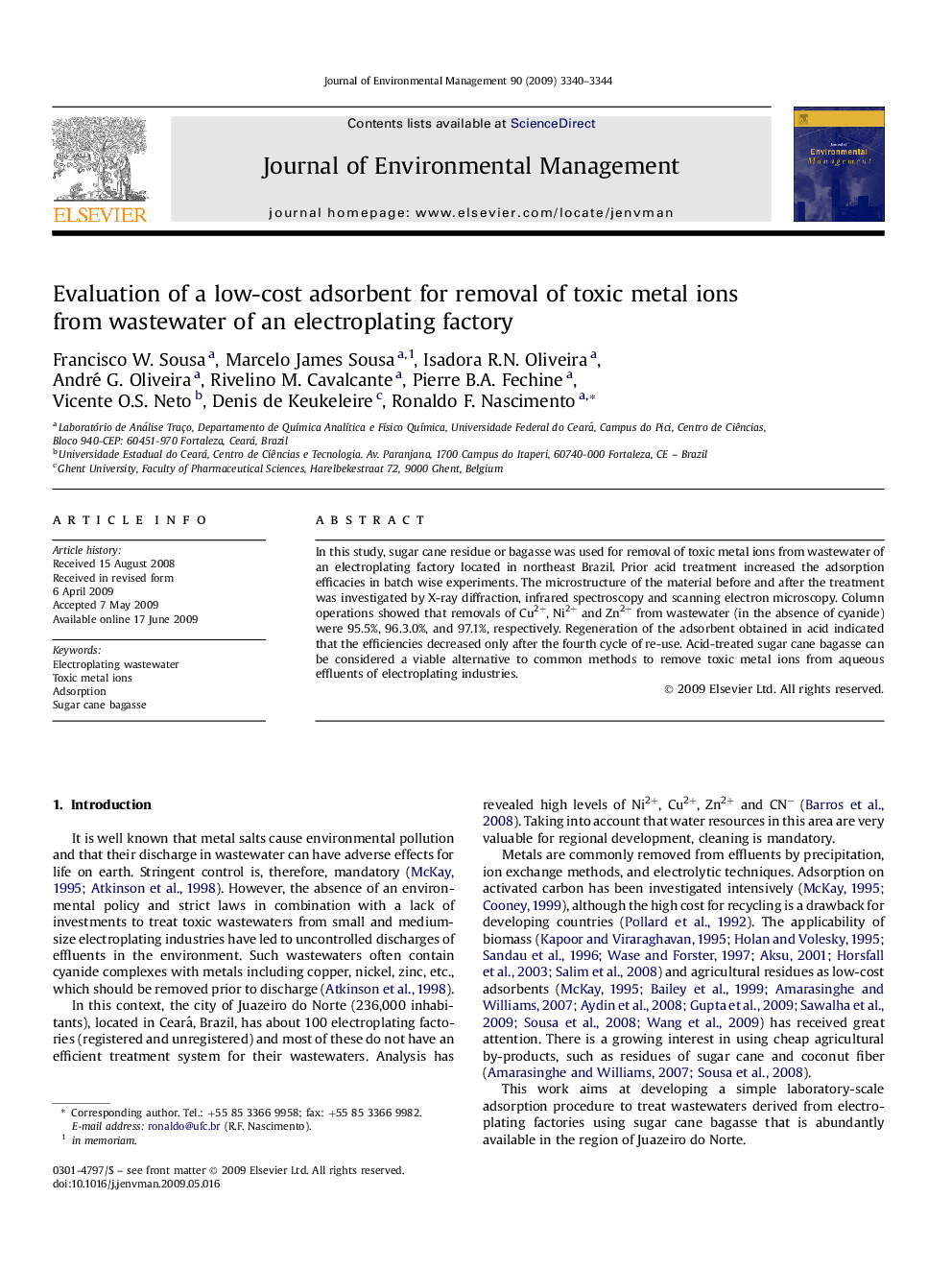| Article ID | Journal | Published Year | Pages | File Type |
|---|---|---|---|---|
| 1058028 | Journal of Environmental Management | 2009 | 5 Pages |
In this study, sugar cane residue or bagasse was used for removal of toxic metal ions from wastewater of an electroplating factory located in northeast Brazil. Prior acid treatment increased the adsorption efficacies in batch wise experiments. The microstructure of the material before and after the treatment was investigated by X-ray diffraction, infrared spectroscopy and scanning electron microscopy. Column operations showed that removals of Cu2+, Ni2+ and Zn2+ from wastewater (in the absence of cyanide) were 95.5%, 96.3.0%, and 97.1%, respectively. Regeneration of the adsorbent obtained in acid indicated that the efficiencies decreased only after the fourth cycle of re-use. Acid-treated sugar cane bagasse can be considered a viable alternative to common methods to remove toxic metal ions from aqueous effluents of electroplating industries.
